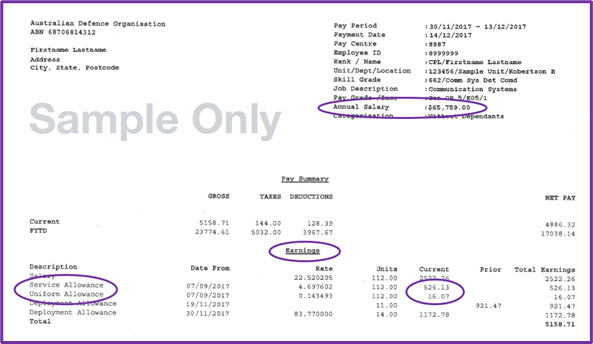
Who can you trust with your money?
April 2, 2019
“All customers are equal, but some are more equal than others”
May 6, 2019It’s often said that when it comes to successful investing, it’s all in the timing. That’s true, especially if you’re an active investor who buys and sells regularly in the hope of turning a profit. The problem is that investment timing, referred to in the sharemarket as ‘stock picking’, can be a risky activity, rather like gambling and it’s often less scientific. Sometimes you win, sometimes you lose. The hope is that your net position will be positive, although for a lot of active investors, the outcomes are not encouraging.
In many cases, active investors behave in a way that is reminiscent of the definition of madness. That is, they employ the same losing strategy over and over again in the expectation of achieving a different result. We’ve seen this at play over many centuries of human history through the phenomenon of “investment bubbles”. A notable bubble in modern history was the Tulip Mania in Holland (1634-1637) in which the price of a tulip bulb rose to the price of a house in Amsterdam, before crashing, taking-down thousands of investors with it into financial ruin. There have been many other bubbles like this, including the South Sea Bubble (1719-1721) in which a notable investor, Sir Isaac Newton (arguably the world’s greatest scientist and enlightened man of logic) lost a small fortune trying, on several occasions, to time the market.
In recent times, we’ve seen the Great Depression (1923-1932), the Japanese Stockmarket Boom/Bust (1982-1992), the Tech Wreck (1994-2000) and the Global Financial Crisis (2006-2009). And in the current decade, we’ve observed the phenomenon of cryptocurrencies, including Bitcoin and Ethereum.
In 2017, a breathless expert commentator said of those “currencies”: “Bitcoin could be at $40,000 at the end of 2018. It easily could. Ethereum, which I think just touched $500 or is getting close, could be triple where it is as well”.
The reality was quite different. On 20 November 2015, Bitcoin was $451 per unit, by 5 December 2017, it was at $25,710 per unit and by 3 May 2019, it was at $8,244. In the case of Ethereum, on 14 October 2016, it was $16 per unit, by 12 January 2018 it was $1,752 per unit and by 3 May 2019 it was at $238. Indeed, at its height in 2017, it was reported that Bitcoin was the biggest bubble in history, having surpassed the previous record holder, the 17th century Dutch Tulip Mania.
Of course, in all of these examples, there were winners and losers. Someone got out of Bitcoin at $25,710 and made a fortune; but someone else purchased Bitcoin at that price and lost, probably heavily. Regardless of that, the prospect of easy money through apparently effortless speculation will always encourage humans to take big risks and to rationalise why they should. In doing so, they are pitting their logical and rational selves against their fear of missing out and failing to “pick the trend”.
What are the lessons from this short excursion into history?
- All markets are volatile. That includes conventionally “safe” investments like real estate, noting that the Great Depression (1923-1932), the Global Financial Crisis (2006-2009) and the recent boom and bust in parts of Australia were based on excessive debt and real estate speculation;
- If you must borrow money (and most of us must in order to buy a family home), do so in moderation. Think about your needs carefully. Do you really need 5 bedrooms? And think about what might happen to your ability to repay your debts should interest rates rise (and they will at some stage) or should you have only one source of income in the family. Putting it another way…do a personal risk assessment. You can be sure that the lender will;
- Understand the products in which you’re thinking about investing, especially inherently speculative ones. Most people have no real idea about the nature of cryptocurrencies, just as they had no idea about the worth of various technology “penny dreadfuls” before the wreck of 2000 or the inherent lack of worth of tulip bulbs in the 17th century;
- Having understood the nature of the products you’re contemplating and if you’ve assessed the risks as high, consider not investing at all, limit your investment, or only invest an amount you can afford to lose. This is especially important if you’re thinking about borrowing to undertake these investments. Remember, if you lose the money, you’ll still owe the lender, a point that many people should have understood before being sucked into dodgy “investments” before the GFC;
- Successful investing is about setting goals and having the discipline to reach them. If you start when you’re young, show patience, moderate debt, understand the magic of compound interest, take calculated and informed risks (noting that when you’re young you may be able to take a little more risk than those of “senior years”), then the chances are you won’t need or be tempted to take the risks that have caused much pain and personal financial suffering over the centuries to many ill-disciplined, aimless, desperate and often greedy investors; and
- As a member of the ADF with a secure job, a good income and generous superannuation, fringe benefits and allowances, you are ideally placed to develop a financial plan and stick to it. This is something we especially encourage all of our younger ADF members to do. It’s a once in a lifetime opportunity.






